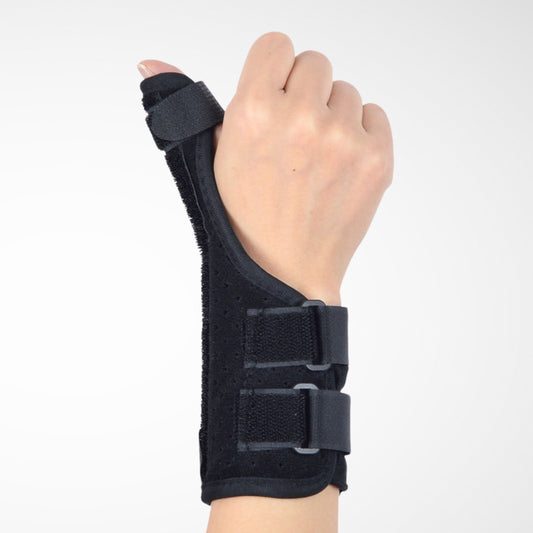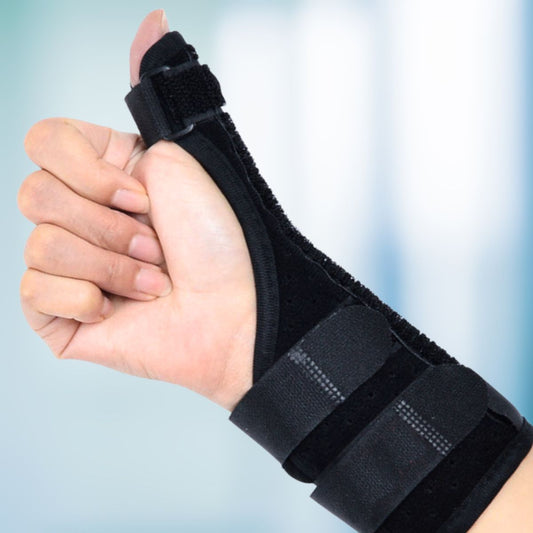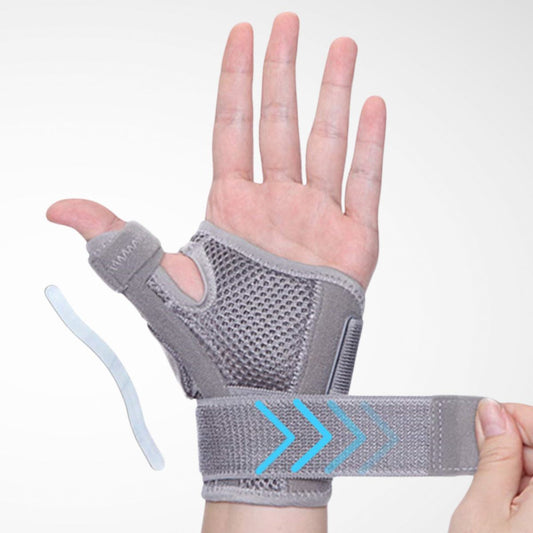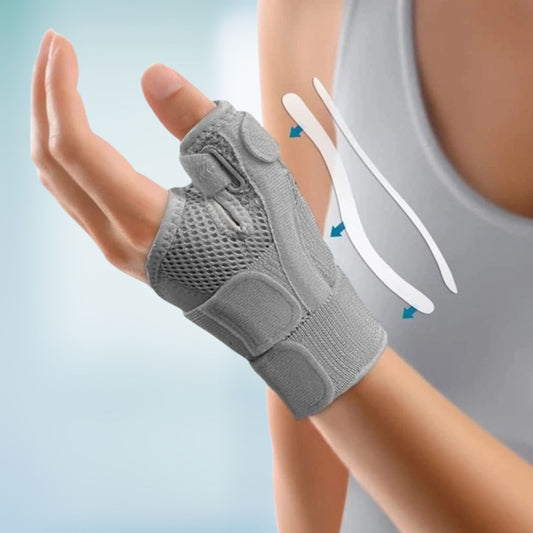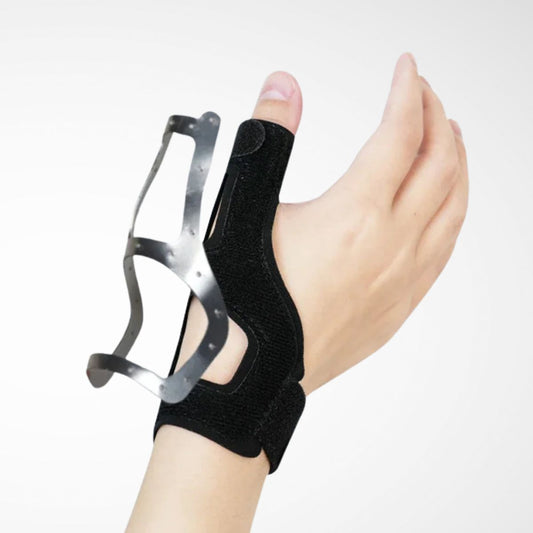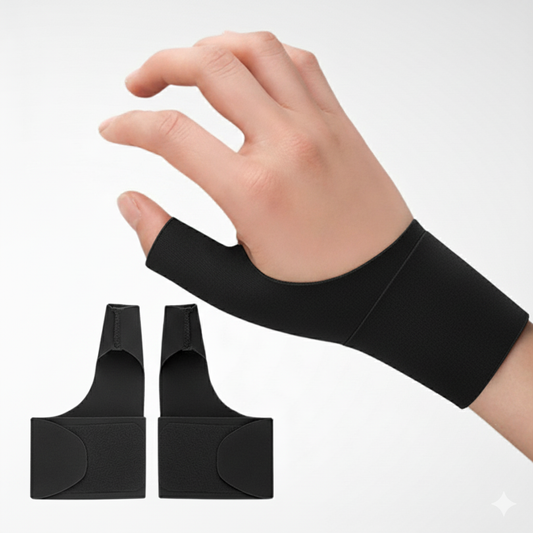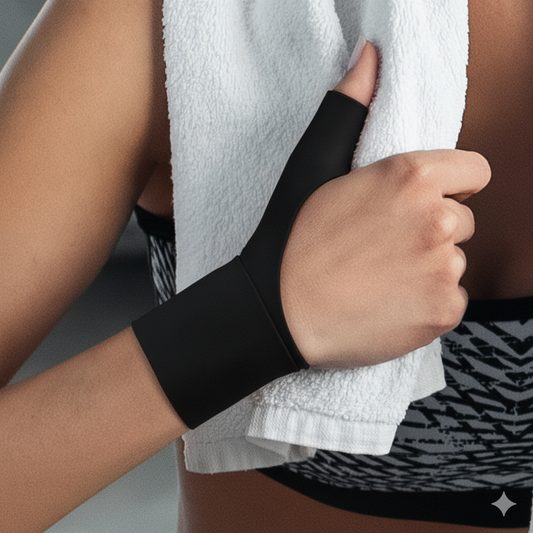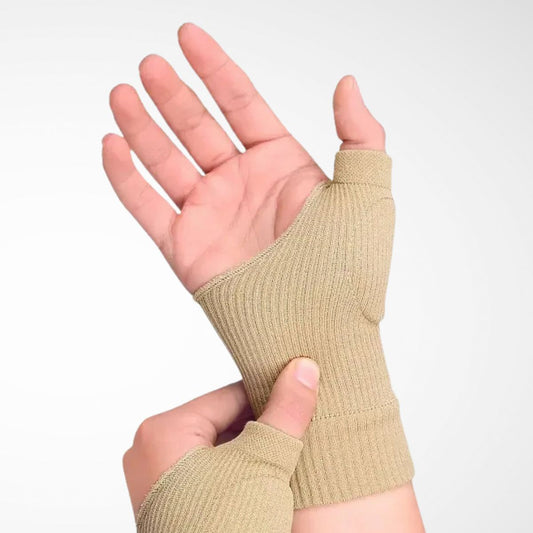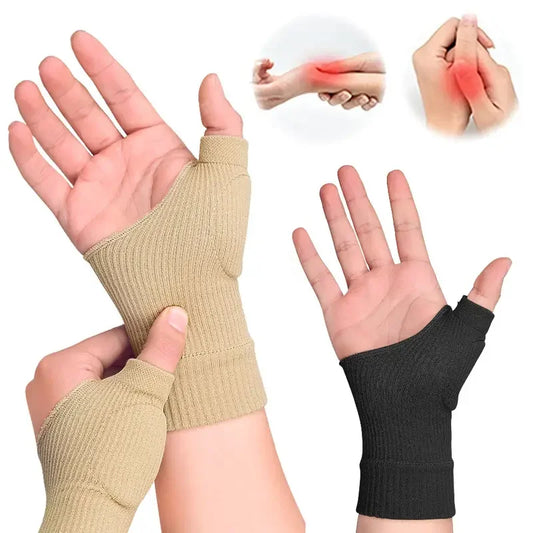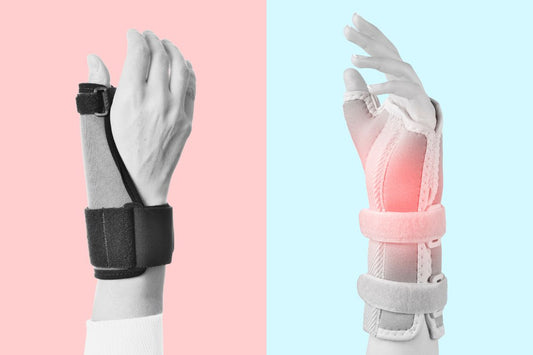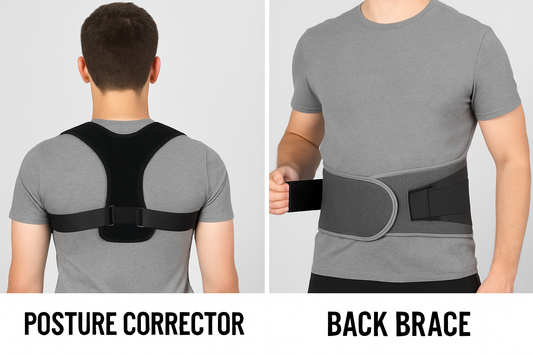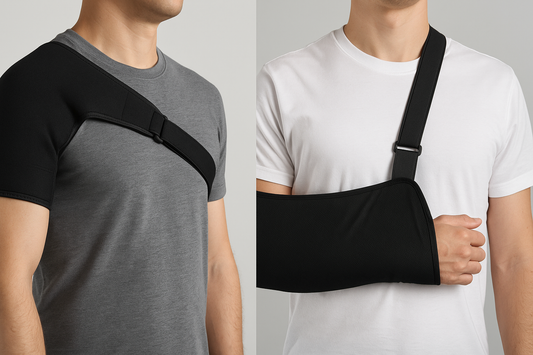"Do I need a thumb spica splint?"
It’s just a sore thumb, right?
You jammed it. You overused it. Maybe you’ve been texting more, lifting heavier, or doing something repetitive like gardening or gaming.
You thought it’d go away in a few days. But it hasn’t.
Now it’s getting harder to grip things. You can feel the strain even when turning a doorknob or holding a cup of coffee.
Here’s the thing:
Thumb injuries are slow to heal — and easy to aggravate.
That’s where the thumb spica splint comes in.
What Is a Thumb Spica Splint?
It’s a brace that stabilizes your thumb and wrist, while still letting your other fingers move freely.
The “spica” part refers to the way it wraps and holds your thumb in place — kind of like a gentle cast, but way more wearable.
You’ll see them recommended for:
- Sprains
- De Quervain’s tenosynovitis
- Arthritis at the thumb base
- Trigger thumb
- Or just good old-fashioned overuse
Basically, if it hurts when you move your thumb — especially outward or downward — this splint is probably your new best friend.
When Should You Actually Wear One?
Let’s get real here. Most people don’t want to wear a splint unless they absolutely have to.
But here are some signs it’s time to stop pushing through and start protecting:
- Your thumb hurts during daily tasks (turning keys, lifting pans, texting)
- You feel sharp or burning pain along the thumb side of your wrist
- The base of your thumb is swollen or tender
- You’ve tried “just resting it” — and it’s still not getting better
That’s your body saying: Hey, I need help.
A Thumb Spica Splint doesn’t just stop motion — it lets healing happen. It reduces the micro-movements that keep reinjuring your tendon or joint. And it gives your body the quiet it needs to actually repair.
What Happens If You Don’t?
Short answer: It lingers.
Thumb injuries that go untreated can turn into chronic pain, weakened grip, or even compensatory problems up the arm (like wrist or elbow pain from overuse).
Worse — if you keep reinjuring the same area, healing can take months instead of weeks.
You don’t need to splint forever. But even wearing it just during high-use times — like work, chores, or sleep — can speed things up dramatically.
Which Splint Is Right?
The ideal spica splint should:
- Be snug but breathable
- Keep your thumb secure without pinching
- Let your fingers and palm move freely
- Be soft enough to wear while sleeping, firm enough to wear during the day
We’ve handpicked a few that meet all the above in our Thumb Spica Splint collection. Whether you need full immobilization or light day support, we’ve got options that don’t scream “hospital gear.”
Can I Sleep with a Thumb Splint On?
Yes — and in many cases, you should.
Wearing a thumb spica splint while you sleep can help prevent unconscious movements that worsen inflammation. It also gives your tendons uninterrupted recovery time, especially if your daytime habits (like texting or typing) are hard to avoid.
That said, it’s important the splint is:
- Comfortable (not cutting off circulation)
- Breathable (especially for warm climates)
- Properly fitted (not too loose or overly tight)
If you wake up with increased stiffness, try adjusting how tight it’s wrapped, or alternate nights for a while.
Some people only need nighttime support. Others benefit from wearing it part of the day too — especially during high-use activities.
How Long Should You Wear a Thumb Spica Splint?
It depends on the severity of your injury or condition.
Here’s a general guide:
- Mild overuse or strain: A few hours a day, plus sleep, for 1–2 weeks
- Moderate sprains or De Quervain’s: 2–6 weeks of regular use, then gradual reduction
- Arthritis or chronic instability: Ongoing use during flare-ups or high-stress tasks
You don’t need to wear it 24/7.
The goal is to limit painful movement, not immobilize your entire hand indefinitely. As symptoms improve, you can taper down use — just don’t rush it.
When to See a Doctor
A splint can work wonders, but it’s not a cure-all.
You should see a doctor or hand specialist if:
- Pain lasts longer than 2–3 weeks despite rest and splinting
- You can’t grip, pinch, or hold objects without pain
- You notice visible swelling, warmth, or deformity
- The pain is spreading into your wrist or forearm
In some cases, your issue may require physical therapy, imaging (like an X-ray or MRI), corticosteroid injections, or evaluation for surgical options — especially in chronic arthritis or tendon sheath inflammation.
Don’t wait too long. Getting expert input early can prevent long-term damage or complications.
Are There Alternatives to Thumb Splints?
If you’re not ready to wear a splint full-time, here are a few complementary or temporary options:
- Kinesiology tape: Offers light support and flexibility, especially during sports or typing
- Thumb compression sleeves: Provide gentle pressure without full immobilization
- Ice and anti-inflammatory gels: Good for flare-ups or swelling
- Targeted exercises: Once the pain subsides, strengthening exercises can help improve long-term stability
That said, these alternatives are usually adjuncts, not substitutes — especially in moderate or persistent cases. A Thumb Spica Splint remains the most effective first-line support for many thumb injuries.
Final Word
Thumb pain is one of those things that seems small — until it starts interfering with everything.
Don’t wait until you can’t grip, twist, or press without pain.
Don’t settle for taping it up with hope.
If your thumb is talking, a good splint might be the quiet answer it needs.


